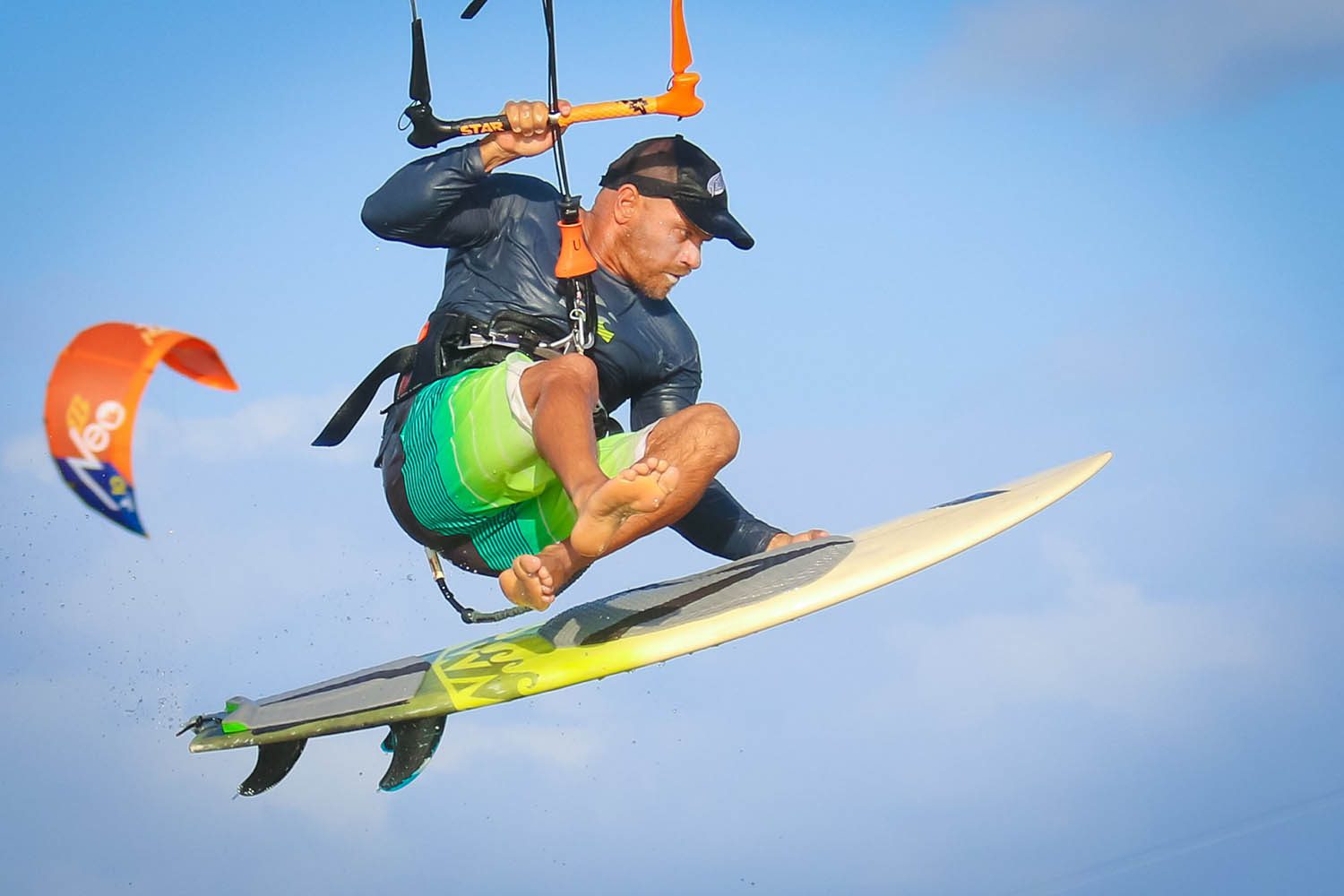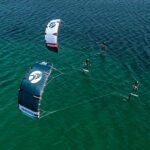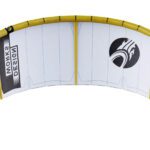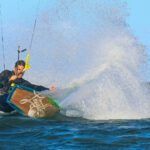
Key Considerations When Purchasing a Kitesurfing Kite.
A Comprehensive Guide
Introduction:
Several essential factors must be considered when buying a kitesurfing kite. This guide provides valuable insights and tips to help you make an informed decision tailored to your needs and preferences. From evaluating different kite models to understanding your skill level and local conditions, here are the key aspects you should consider before investing in a kitesurfing kite.
Determine Your Skill Level:
Before delving into the world of kitesurfing kites, it’s crucial to assess your skill level accurately. Kite manufacturers often classify kites based on skill levels, such as beginner, intermediate, and advanced. Choosing a kite that matches your skill level ensures optimal performance, safety, and a better learning experience.
Understand Different Kite Types:
Kitesurfing kites come in various types, each designed for specific riding styles and conditions. The primary types include inflatable kites (LEI) and foil kites. Inflatable kites are more popular among beginners and freestyle riders, while wave riders and experienced kiteboarders favor foil kites. Research and test different kite types to find the one that suits your riding style and preferences.
Consider the Kite Size:
The right kite size is essential for an enjoyable kitesurfing session. The appropriate kite size depends on weight, wind conditions, and riding style. Lighter riders may require smaller kites, while heavier riders or those riding in light wind conditions may need larger kites. Consult sizing charts provided by kite manufacturers or seek advice from experienced kiteboarders to determine the suitable kite size for your needs.
Evaluate Brand and Model Options:
Numerous brands offer kitesurfing kites, each with its models and features—reputable research brands known for their quality and durability. Check customer reviews, ratings, and professional opinions to gauge the performance and reliability of different models. When comparing models, consider factors like stability, responsiveness, wind range, and depower capabilities.
Assess Wind Conditions:
Wind conditions play a significant role in determining the suitable kite for your needs. Consider the typical wind speeds in your area and identify the prevailing wind direction. Some kites are better suited for strong winds, while others excel in light wind conditions. Understanding the wind patterns in your location will help you choose a kite that performs optimally in your local conditions.
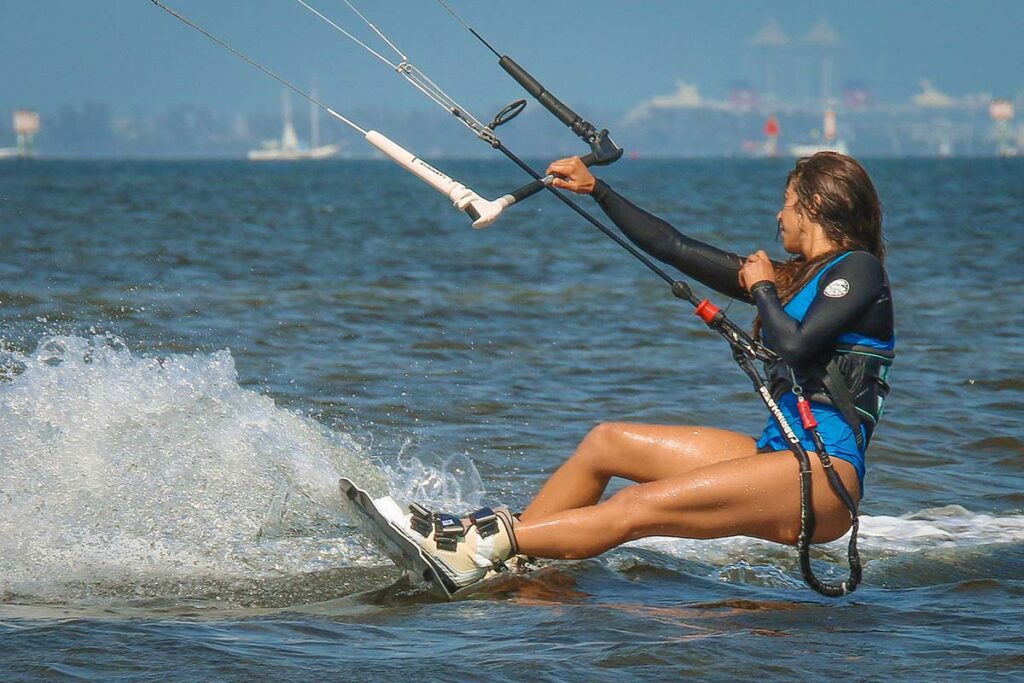
Seek Expert Advice:
If you need help deciding which kite to buy, seek advice from experienced kiteboarders or professionals at reputable kite shops. They can provide valuable insights and recommendations based on their expertise and knowledge of various kite models. Consider attending kiteboarding events or demos where you can test different kites to get a hands-on experience before purchasing.
Budget Considerations:
Kitesurfing kites vary in price range, depending on brand, model, and features. Set a budget that aligns with your financial capabilities and consider the cost of additional equipment, such as control bars and harnesses. While it’s important to stay within your budget, prioritize quality and performance over price alone, as investing in a reliable kite will ensure a safer and more enjoyable kitesurfing experience.
Conclusion:
Buying a kitesurfing kite requires careful consideration of various aspects, ranging from your skill level and preferred riding style to wind conditions and brand evaluations. By taking the time to research and assess different options, seeking expert advice, and understanding your specific requirements, you can make a well-informed decision that enhances your kitesurfing adventures. Remember to prioritize safety, quality, and performance when selecting a kitesurfing kite that perfectly suits your needs.
(FAQs) – Buying a Kitesurfing Kite:
- How do I determine the right kite size for my weight and riding style?
- Consider your weight, wind conditions, and preferred riding style.
- Consult sizing charts provided by kite manufacturers or seek advice from experienced kiteboarders.
- Lighter riders may require smaller kites, while heavier riders or those riding in light wind conditions may need larger kites.
- What are the main differences between inflatable (LEI) and foil kites?
- Inflatable kites (LEI) are more popular among beginners and freestyle riders, providing stability and easy relaunch from the water.
- Foil kites are favored by wave riders and experienced kiteboarders, offering better upwind performance and efficient depower capabilities.
- How important is it to consider wind conditions when buying a kitesurfing kite?
- Wind conditions significantly affect the performance of your kite.
- Identify the typical wind speeds and directions in your area.
- Some kites are better suited for strong winds, while others excel in light wind conditions.
- Choose a kite that performs optimally in your local wind conditions.
- Should I prioritize brand reputation when selecting a kitesurfing kite?
- Brand reputation can be an essential factor to consider.
- Research reputable brands are known for their quality, durability, and customer support.
- Check customer reviews, ratings, and professional opinions to gauge the performance and reliability of different models.
- How can I test different kite models before making a purchase?
- Attend kiteboarding events or demos where you can test various kite models.
- Seek advice from experienced kiteboarders or professionals at reputable kite shops.
- Take advantage of any trial or rental programs offered by kite shops.
- What other equipment should I consider purchasing along with the kite?
- Additional equipment may include a control bar, lines, harness, and safety leash.
- Ensure compatibility between the kite and control bar system.
- Consider the quality and comfort of the harness for a better kitesurfing experience.
- Can I kitesurf with any kite, regardless of my skill level?
- Kitesurfing kites are often classified based on skill levels (beginner, intermediate, advanced).
- Choosing a kite that matches your skill level for safety and optimal performance is crucial.
- Beginners should consider kites explicitly designed for novice riders, with user-friendly characteristics and forgiving behavior.
- What should be my primary focus: price or quality?
- While budget is important, prioritize quality and performance over price alone.
- Investing in a reliable kite ensures safety and a better overall kitesurfing experience.
- Look for a kite that offers a good balance between quality, performance, and affordability.
Remember, it’s always recommended to consult with experts or experienced kiteboarders to address any specific questions or concerns before purchasing a kitesurfing kite.
Author
Latest entries
 WatersportsOctober 20, 2024Chasing the Wind: Pushing Limits with the Cabrinha Moto X 12 Meters
WatersportsOctober 20, 2024Chasing the Wind: Pushing Limits with the Cabrinha Moto X 12 Meters WatersportsSeptember 16, 2024Cabrinha Moto X: Enjoy the Ride
WatersportsSeptember 16, 2024Cabrinha Moto X: Enjoy the Ride WatersportsMay 19, 2024Cabrinha 2024 Moto XL Review: The Ultimate Lightwind Kite
WatersportsMay 19, 2024Cabrinha 2024 Moto XL Review: The Ultimate Lightwind Kite WatersportsDecember 16, 2023Kiteboarding Travel
WatersportsDecember 16, 2023Kiteboarding Travel
